Foreign demand for property in Spain is getting more diversified but the overall number of buyers did not grow last quarter for the first time in years.
The Association of Spanish Land Registrars have just published their Spanish property market report for the last quarter of 2018 in which, amongst other things, they break down demand by nationality. I’ve dug the figures out of their report to reveal some interesting things about foreign demand for property in Spain at the end of last year.
Before looking at foreign demand let’s take a quick look at overall demand and local demand.
The overall market was up 7% in Q4 to 120,199 home sales inscribed in the Spanish Land Registry. That was the lowest level of growth in the annualised quarterly figures since the Spanish property market started to recover back in 2014. The growth was entirely driven by rising local demand up by 8.6% to 104,982 home sales recorded in the Land Registry.
Foreign demand for property in Spain Q4 2018
The number of Spanish homes bought by foreign buyers in Q4 2018 was 15,217, almost unchanged compared to the fourth quarter of 2017.
Unchanged means that foreign demand did not grow at all in the last quarter for the first time since 2010, and the chart immediately above shows that the upward trend in foreign demand has come to an end, at least for now. Back in Q4 2017 foreign demand was growing at 20% per annum, whilst back in 2016 it was growing by more than 30% in some quarters. But even though growth has fallen to zero as of Q4 2018, foreign demand is still around 13% of the Spanish property market, where it has been since 2014, having risen from a low of 4% in 2009.
Foreign demand for Spanish property by nationality
Broken down by nationality the British were still number one with 2,524 recorded purchases and 17% foreign market share in Q4 2018. They were followed by the Germans with 1,178 purchases (8% market share) and the French with 1,130 acquisitions (7% market share). The biggest group with 6,863 purchase and 45% of the foreign market were the rest of the world, the sum of all other countries whose nationals have bought property in Spain.
So the British are still the single biggest group by far despite all the uncertainty, problems, and weaker pound brought on by Brexit. It’s also interesting to note that the Germans were the second biggest group of buyers in three quarters out of four last year, whereas traditionally the French have been the second biggest group after the British. The German market looks like it’s overtaking the French market, with potentially positive implications for the Balearics, where the Germans mainly buy, and negative ones for Catalonia, where the French tend to buy.
Foreign demand annualised change by nationality
Looking at the annualised change in foreign demand by nationality we see more countries contracting than growing for the first time since the bust a decade ago. Important markets like Sweden (-29%) Norway (-16%) and Belgium (-15%) were heavily down. Were it not for growth in the two biggest sources of foreign demand – the UK (+6%) and the rest of the world (+13%) – overall foreign demand would have been significantly down in Q4 2018, with all key countries bar the UK in negative territory (next chart).
I assume the growth from the rest of the world group comes from an increasingly diversified number of countries providing a small number of buyers each (the Registrars don’t tell us). For the first time since the Registrars started publishing this data the USA was a big enough market, with 144 buyers in the quarter, to be listed in its own right.
What’s going on?
Clearly, foreign demand for Spanish property is cooling down. Each market will have its own story to tell, and I’ll try to analyse key markets one by one over the next few weeks. But the fact that so many key markets are going cool on Spain at the same time suggests part of the explanation lies in Spain itself. I guess part of the story is rising house prices that make Spanish property start to look expensive, or at least no longer a bargain. For quite a long time during and after the Spanish real estate crash that started a decade ago, Spanish house prices looked like an absolute bargain to many foreign buyers. In retrospect it was a great time to buy. House prices have been steadily rising ever since in most areas that attract foreign investors, and at some point rising prices, combined with other reasons to be wary about investing in Spanish property, are bound to give a growing number of foreign investors cold feet.
Or maybe it’s just a temporary dip before the trend roars back up. Time will tell, but I have my doubts. I don’t expect foreign demand for Spanish property to go into a sharp decline, but I wouldn’t be surprised if growth is weak, flat or even negative over the next few quarters. And once again, the British are holding up foreign demand. Brexit, just around the corner, could have a big impact, one way or another, though nobody seems to know what Brexit is or will be.





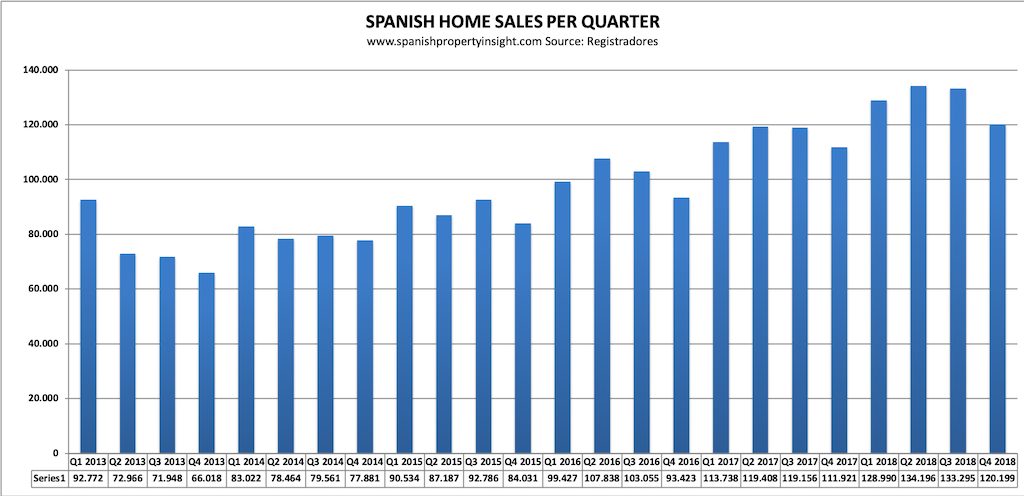
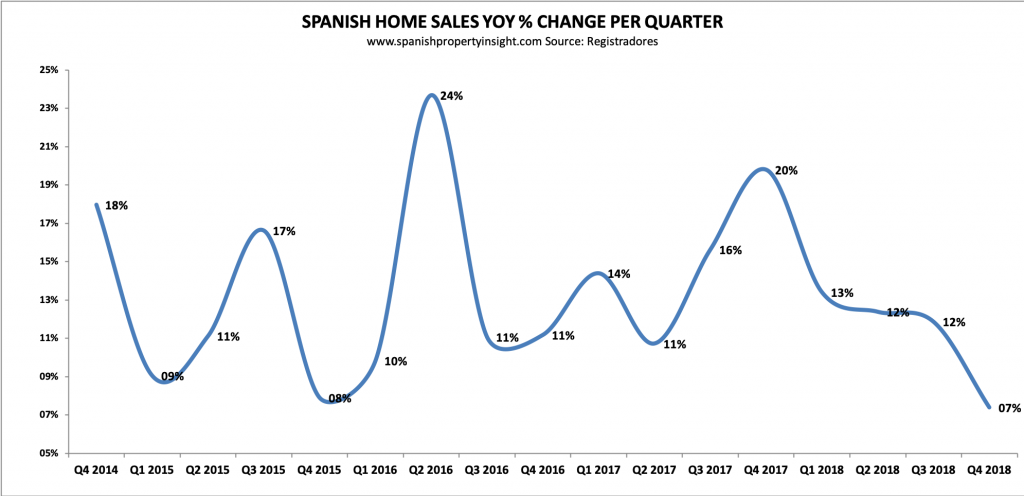
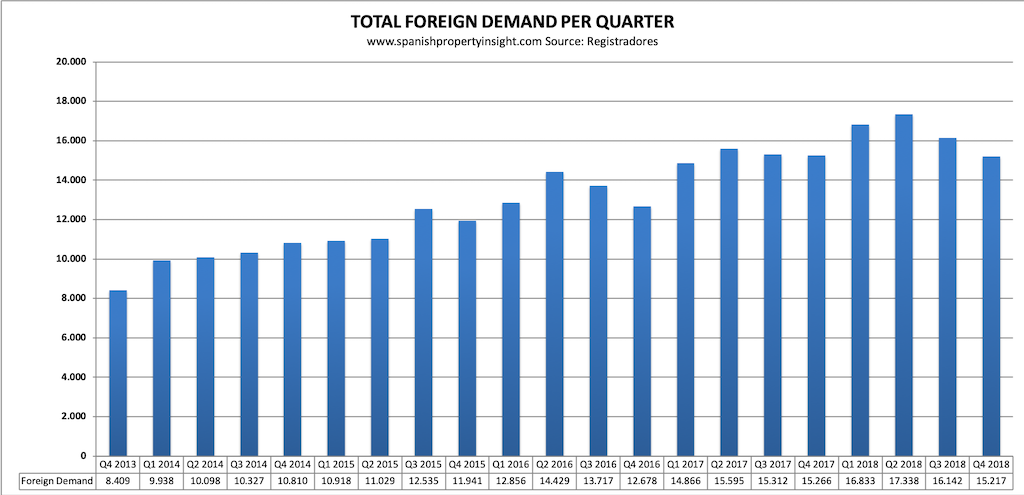

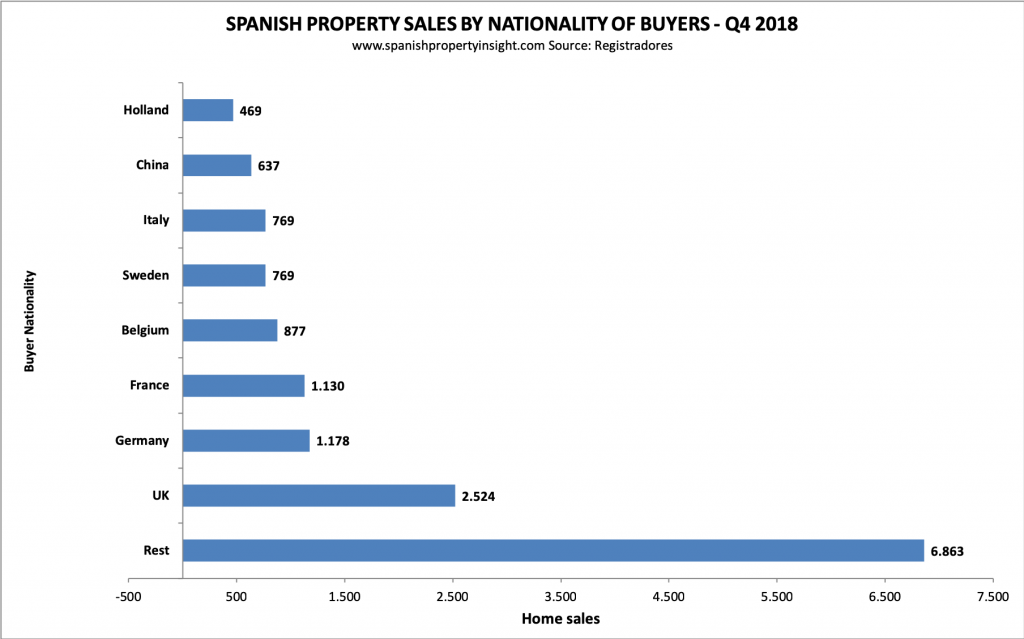
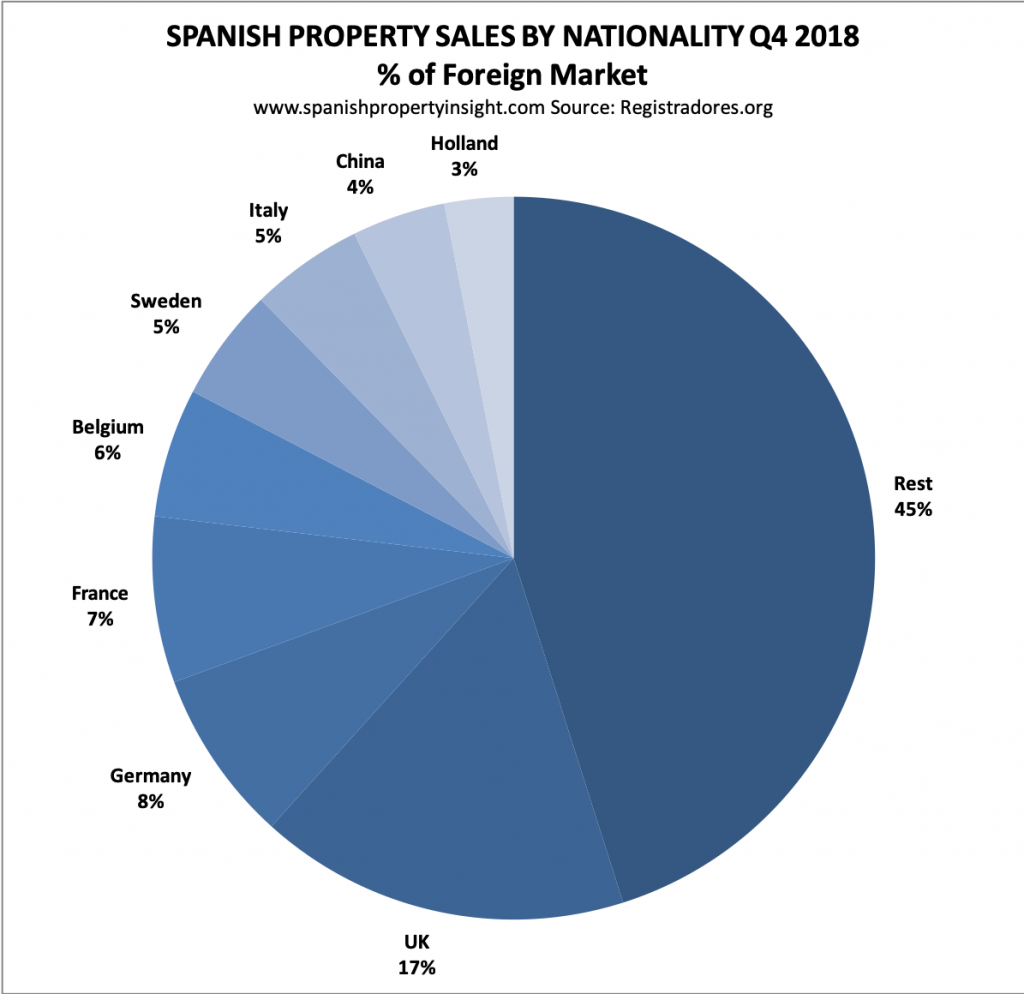
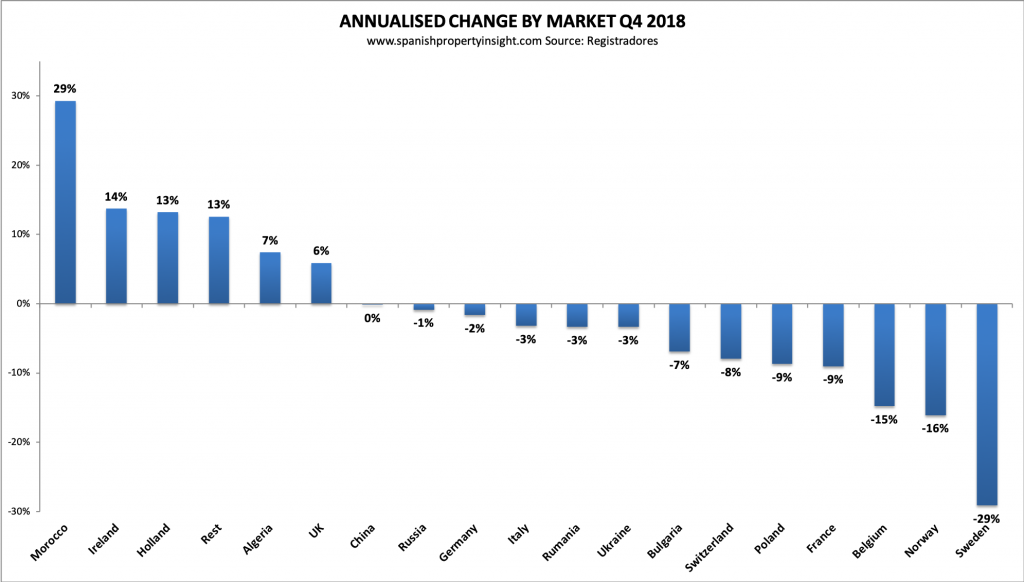
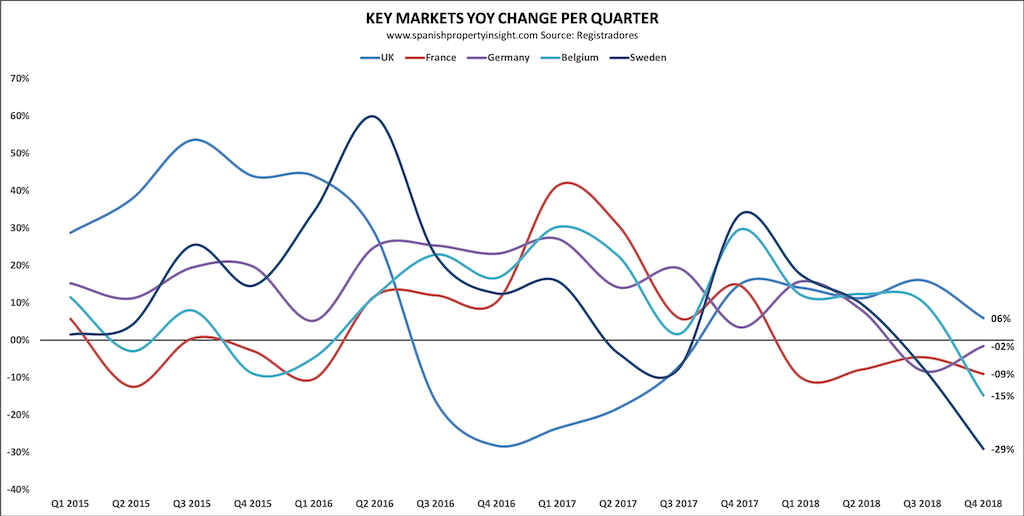
Telf says:
@Mark – re: your comment on affordability of Spanish housing; there’s an interesting comparison report (by IMF) on affordability of housing in many countries. It compares real house prices, credit growth and price to income ratio as well as house price to rent ratio. The latest data is for Q3 2018 and shows a) Spanish price increases are average for the world, b) credit growth is negative and c) house price to income and house price to rent are in the top third. Portugal seems to be more at risk from price levels.
https://www.imf.org/external/research/housing/index.htm
SurveySpain says:
Exchange rates are a big influencer. The Swedish kroner has fallen even more than the Pound and if other Nordic countries are similarly affected, then they too will have found buying up to 25% more expensive. Also, these countries don’t have large populations, probably totaling a third of UK at most, so they will be reaching the limit to the number of people in the population willing and able to buy in Spain.
The number of Moroccan and Algerian buyers is interesting too. Are they golden visa purchasers, from an increasingly wealthy upper middle class?
And where are the large fund purchases registered? Are they excluded from these figures? If a fund is registered in Spain and buys a block of 1,000 discounted properties from a Spanish bank, are these counted as Spanish purchasers?
Yes, the stats raise as many questions as they answer.